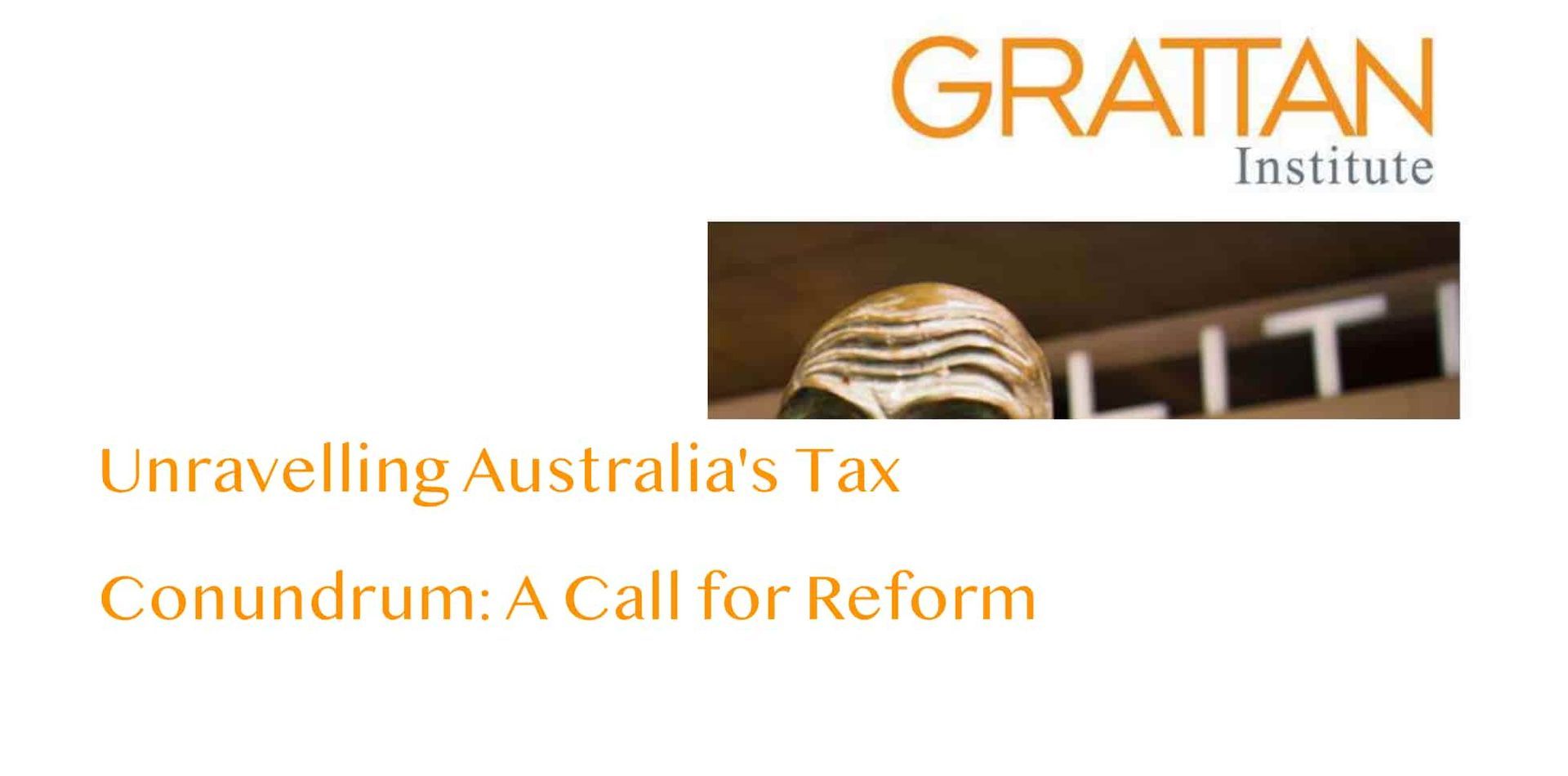
Most people trying to get into the property market usually blame the current Tax system.
They believe that property prices are the way they are because investors drive prices up and are supported by Tax benefits, however if those tax benefits were not there they wouldn’t buy properties.
A very interesting paper came from The Grattan Institute that talks about a tax reform and what would that do the property prices in Australia.
The Grattan Institute is an independent think-tank focused on Australian public policy.
Here is my overview of the paper, however if you wish to read the full paper here is the link.

HOT PROPERTY
Australia’s tax landscape is in need of a significant overhaul.
The interplay of a hefty fifty per cent capital gains tax (CGT) discount with negative gearing distorts investment decisions, amplifies housing market volatility, and hampers home ownership.
Understanding the Current Scenario:
The existing tax breaks, particularly the CGT discount and negative gearing, favour the affluent, allowing them to curtail personal income tax at an annual cost of $11 billion to the public purse.
These measures have fostered a system that benefits the wealthy, leading to imbalances in investment decisions and housing market dynamics.
Rationale for Reform:
The CGT discount, initially designed to preserve incentives for saving and investing, has inadvertently led to overcompensation for inflation among investors.
The policy, though well-intentioned, has tilted too heavily in favour of protecting savings, sacrificing broader economic considerations.
The report suggests that revising the CGT discount to 25 per cent strikes a better balance, addressing competing considerations and boosting Commonwealth Government tax revenue by $3.7 billion annually.
Negative Gearing Complexities:
Negative gearing, a practice allowing investors to use losses to reduce tax on wages and salaries, deviates from international norms.
This system primarily benefits high-income individuals, diverting capital from more productive investments.
The report advocates for aligning Australia with global practices, ceasing to deduct losses from passive investments from labour income.
This change is expected to generate $2 billion annually in the short term.
Impact on Housing Affordability:
The proposed changes aim to enhance housing affordability, albeit modestly. Estimations suggest that prices could be up to 2 per cent lower than the status quo.
While rents and new development rates are not anticipated to witness significant shifts, the effects on land prices could be more pronounced due to constraints on urban housing supply.
Phasing in Change:
Recognizing the potential for price shocks, the report recommends a phased approach to implementation.
This not only cushions the impact on the market but also makes the reforms more palatable to the public.
This approach is favoured over grandfathering current holdings, as it avoids complexity, accelerates additional tax collection, and promotes fairness to new investors.
Conclusion:
Australia stands at a crossroads in its tax policy, and the proposed reforms offer a path toward a more equitable and economically sound system.
While the changes might not revolutionise the housing market, they represent a step toward correcting imbalances and fostering a fairer financial landscape.
As discussions on tax reform intensify, the hope is that policymakers will consider the long-term benefits these changes can bring to the Australian economy.
Make sure you check out my series about how did we get here on property prices.
share to



